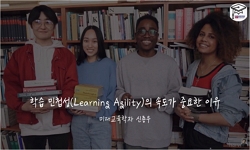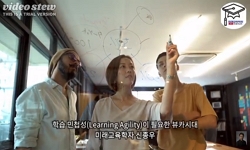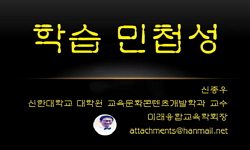본 연구는 고객에게 다양한 서비스를 제공해야하는 접점직원의 민첩성을 제고하기 위해 필요한 IT 기술 즉, 행동유도시스템의 촉진요인과 결과요인을 확인하고자 한다. 이를 위해 변화준비...
http://chineseinput.net/에서 pinyin(병음)방식으로 중국어를 변환할 수 있습니다.
변환된 중국어를 복사하여 사용하시면 됩니다.
- 中文 을 입력하시려면 zhongwen을 입력하시고 space를누르시면됩니다.
- 北京 을 입력하시려면 beijing을 입력하시고 space를 누르시면 됩니다.
https://www.riss.kr/link?id=A105159007
- 저자
- 발행기관
- 학술지명
- 권호사항
-
발행연도
2018
-
작성언어
Korean
- 주제어
-
등재정보
KCI등재
-
자료형태
학술저널
-
수록면
123-142(20쪽)
-
KCI 피인용횟수
1
- DOI식별코드
- 제공처
-
0
상세조회 -
0
다운로드
부가정보
국문 초록 (Abstract)
본 연구는 고객에게 다양한 서비스를 제공해야하는 접점직원의 민첩성을 제고하기 위해 필요한 IT 기술 즉, 행동유도시스템의 촉진요인과 결과요인을 확인하고자 한다. 이를 위해 변화준비성, 행동유도시스템, 민첩성 및 성과의 개념을 정립하고 또한 이들 간의 관계를 이론적 및 실증적으로 검증하여 서비스기업에서 IT 기술을 이용한 경쟁력 강화에 필요한 전략적 시사점을 도출하였다. 행동유도시스템을 사용하는 접점직원 419명을 대상으로 Amos 23.0을 사용하여 분석한 결과 첫째, 변화준비성의 기술, 조직, 환경요인은 행동유도시스템에 모두 유의한 영향을 미치는 것으로 나타났다. 둘째, 행동유도시스템은 민첩성과 성과에 모두 유의한 영향을 주는 것으로 나타났다. 셋째, 민첩성은 성과에 유의한 성과를 주는 것으로 나타났다. 넷째, 업무불확실성은 행동유도시스템과 민첩성의 관계를 조절하는 것으로 밝혀졌지만, 행동유도시스템과 성과와의 관계는 조절하지 못하는 것으로 나타났다. 이러한 결과의 이유와 시사점을 제시하였다.
다국어 초록 (Multilingual Abstract)
This study defined the concepts of change-readiness, affordance system, agility, and performance, which are becoming increasingly important and necessary in service industry. Also, by verifying the relationship among these factors based on theoretical...
This study defined the concepts of change-readiness, affordance system, agility, and performance, which are becoming increasingly important and necessary in service industry. Also, by verifying the relationship among these factors based on theoretical and empirical researches, it proposed strategic implications for service firms to reinforce their competitiveness. The results of the analysis in this study are as follows. First, the factors of technology, organization, and environment had significant effects on affordance system. Second, affordance system had significant effects on both agility and performance. Third, agility had a significant effect on performance. Fourth, job uncertainty moderated the relationship between affordance system and agility, but not between affordance system and performance. The results suggest that affordance system is a highly effective method of improving agility of the frontline employees. To maximize the utility of affordance system, sufficient change-readiness in technological, organizational, and environmental factors are required. Reasons and implications of these observed relationships are discussed.
목차 (Table of Contents)
- 요약
- Abstract
- 1. 서론
- 2. 이론적 배경
- 3. 연구모형 및 가설
- 요약
- Abstract
- 1. 서론
- 2. 이론적 배경
- 3. 연구모형 및 가설
- 4. 실증연구
- 5. 결론
- References
참고문헌 (Reference)
1 신정신, "호텔 종사원의 자아탄력성이 서비스민첩성, 기업이미지, 기업성과에 미치는 영향" 한국관광연구학회 28 (28): 137-148, 2014
2 신정신, "호텔 종사원의 성취욕구가 서비스민첩성, 서비스몰입 및 감정노동에 미치는 영향" 한국관광연구학회 29 (29): 159-171, 2015
3 김상현, "클라우드 컴퓨팅에 대한 조직 행동의 이해: 조직의 클라우드 컴퓨팅 구현과정에 영향을 미치는 요소와 변혁적 리더쉽의 조절효과" 한국정보시스템학회 25 (25): 37-61, 2016
4 서창적, "직속상사의 변혁적 리더십과 종업원의 팔로워십 특성에 따른 종업원만족이 고객 인지 서비스 품질에 미치는 영향" 한국생산관리학회 17 (17): 55-91, 2006
5 최유환, "중소기업 영업직근로자들의 직무향상프로그램과업무환경이 개인성과에 미치는 영향관계에서의학습전이의 매개역할" 한국중소기업학회 35 (35): 165-191, 2013
6 우형록, "조직 및 개인 수준의 변화준비성이 조직변화 실행과 성과에 미치는 영향" 한국농·산업교육학회 46 (46): 141-168, 2014
7 곽기영, "정보기술역량과 조직학습이 기업성과에 미치는 영향: 조직민첩성의 역할을 중심으로" 한국경영학회 40 (40): 1075-1108, 2011
8 이종석, "전사적자원관리(ERP : Enterprise Resource Planning)의 발전과정과 발전방향 제안" 한국정보기술학회 6 (6): 192-199, 2008
9 주기중, "서비스 스케이프와 정보기술이 서비스 접점직원의 직무만족과 정서적 몰입 및 서비스 수행에 미치는 영향: 간호서비스를 중심으로" 한국산업정보학회 17 (17): 75-88, 2012
10 이상식, "민첩 생산과 경영성과에 대한 실증적 연구: 민첩성의 선행요인을 중심으로" 한국산업정보학회 20 (20): 103-112, 2015
1 신정신, "호텔 종사원의 자아탄력성이 서비스민첩성, 기업이미지, 기업성과에 미치는 영향" 한국관광연구학회 28 (28): 137-148, 2014
2 신정신, "호텔 종사원의 성취욕구가 서비스민첩성, 서비스몰입 및 감정노동에 미치는 영향" 한국관광연구학회 29 (29): 159-171, 2015
3 김상현, "클라우드 컴퓨팅에 대한 조직 행동의 이해: 조직의 클라우드 컴퓨팅 구현과정에 영향을 미치는 요소와 변혁적 리더쉽의 조절효과" 한국정보시스템학회 25 (25): 37-61, 2016
4 서창적, "직속상사의 변혁적 리더십과 종업원의 팔로워십 특성에 따른 종업원만족이 고객 인지 서비스 품질에 미치는 영향" 한국생산관리학회 17 (17): 55-91, 2006
5 최유환, "중소기업 영업직근로자들의 직무향상프로그램과업무환경이 개인성과에 미치는 영향관계에서의학습전이의 매개역할" 한국중소기업학회 35 (35): 165-191, 2013
6 우형록, "조직 및 개인 수준의 변화준비성이 조직변화 실행과 성과에 미치는 영향" 한국농·산업교육학회 46 (46): 141-168, 2014
7 곽기영, "정보기술역량과 조직학습이 기업성과에 미치는 영향: 조직민첩성의 역할을 중심으로" 한국경영학회 40 (40): 1075-1108, 2011
8 이종석, "전사적자원관리(ERP : Enterprise Resource Planning)의 발전과정과 발전방향 제안" 한국정보기술학회 6 (6): 192-199, 2008
9 주기중, "서비스 스케이프와 정보기술이 서비스 접점직원의 직무만족과 정서적 몰입 및 서비스 수행에 미치는 영향: 간호서비스를 중심으로" 한국산업정보학회 17 (17): 75-88, 2012
10 이상식, "민첩 생산과 경영성과에 대한 실증적 연구: 민첩성의 선행요인을 중심으로" 한국산업정보학회 20 (20): 103-112, 2015
11 김유정, "모바일 앱 마켓에서 브랜드 인지도, 지각된 전환비용, 이용자 충성도가 모바일 앱 구매의도에 미치는 영향: 구매 경험 조절 효과" 한국인터넷전자상거래학회 15 (15): 75-94, 2015
12 홍관수, "모바일 뱅킹 이용자의 지각된 민첩성이 만족 및 충성도에 미치는 영향: 인지욕구의 조절효과" 국제e-비즈니스학회 15 (15): 505-526, 2014
13 허명숙, "구성원의 민첩성과 업무성과 간의 관계에 관한 실증연구: 민첩성의 영향요인과 지식지향 리더십을 중심으로" 한국지식경영학회 16 (16): 139-172, 2015
14 김진완, "공급사슬 민첩성 역량들 간 구조적 관계에 관한 연구" 엘지씨엔에스 11 (11): 131-145, 2012
15 Breu, K., "Workforce Agility: The New Employee Strategy for the Knowledge Economy" 17 (17): 21-31, 2002
16 Qin, R., "Workforce Agility for Stochastically Diffused Conditions -A Real Options Perspective-" 125 (125): 324-334, 2010
17 Yoon, T. E., "Why aren't Organizations Adopting Virtual Worlds?" 29 (29): 772-790, 2013
18 Conole, G., "What are the Affordances of Information and Communication Technologies?" 12 (12): 113-124, 2004
19 Venkatesh, V., "User Acceptance of Information Technology: Toward a Unified View" 27 (27): 425-478, 2003
20 Wang, Y. M., "Understanding the Determinants of RFID Adoption in the Manufacturing Industry" 77 (77): 803-815, 2010
21 Lin, H. F., "Understanding the Determinants of Electronic Supply Chain Management System Adoption: Using the Technology-Organization-Environment Framework" 86 (86): 80-92, 2014
22 Yang, Z., "Understanding SaaS Adoption from the Perspective of Organizational Users: A Tripod Readiness Model" 45 : 254-264, 2015
23 Oliveira, T., "Understanding E-business Adoption across Industries in European Countries" 110 (110): 1337-1354, 2010
24 Stalk, G., "Time -The Next Source of Competitive Advantage-" 66 (66): 41-51, 1988
25 Pavlou, P. A., "The Third Hand: IT-enabled Competitive Advantage in Turbulence through Improvisational Capabilities" 21 (21): 443-471, 2010
26 Ajzen, I., "The Theory of Planned Behavior" 50 (50): 179-211, 1999
27 Hopwood, A. G., "The Relationship between Accounting and Personnel Management -Past Conflicts and Future Potential-" 1 (1): 40-47, 1972
28 Norman, D. A., "The Psychology of Everyday Things" Doubleday 1988
29 Tornatzky, L. G., "The Processes of Technological Innovation" Lexington Books 1990
30 Baron, R. M., "The Moderator-Mediator Variable Distinction in Social Psychological Research: Conceptual, Strategic, and Statistical Considerations" 51 : 1173-1182, 1986
31 Lawrence, J. E., "The Effect of Short-Term Low-Dose Perchlorate on Various Aspects of Thyroid Function" 10 : 659-663, 2000
32 Attewell, P., "Technology Diffusion and Organizational Learning: The Case of Business Computing" 3 (3): 1-19, 1992
33 Gaver, W. W., "Technology Affordances" 79-84, 1991
34 Chen, L., "Technology Adaptation in E-Commerce: Key Determinants of Virtual Stores Acceptance" 22 (22): 74-86, 2004
35 Yap, C. K., "Symbolic Treatment of Geometric Degeneracies" 10 (10): 349-370, 1990
36 Wasserstoff, M., "Supporting Cooperation through Customization: The Tviews Approach" 6 (6): 305-325, 1997
37 Lee, H. S., "Structural Equation Modeling with AMOS 22" Jpyhyuntae 2015
38 Chatterjee, S., "Strategic Relevance of Organizational Virtues Enabled by Information Technology in Organizational Innovation" 32 (32): 158-196, 2015
39 Sommerville, I., "Software Engineering" Addison Wesley 2011
40 Sambamurthy, V., "Shaping Agility through Digital Options: Reconceptualizing the Role of Information Technology in Contemporary Firms" 27 (27): 237-263, 2003
41 Singh, J., "Performance Productivity and Quality of Frontline Employees in Service Organizations" 64 (64): 15-34, 2000
42 Gibson, J., "Perceiving, Acting and Knowing: Toward an Ecological Psychology Mahwah" Lawrence Erlbaum Associates 62-82, 1977
43 Davis, F. D., "Perceived Usefulness, Perceived Ease of Use, and Useracceptance of Information Technology" 13 (13): 319-340, 1989
44 Nicolaou, A. I., "Perceived Information Quality in Data Exchanges: Effects on Risk, Trust, and Intention to Use" 17 (17): 332-351, 2006
45 Wu, I. L., "Organizational Applications of IT Innovation and Firm's Competitive Performance: A Resource-Based View and the Innovation Diffusion Approach" 35 (35): 25-44, 2015
46 Wu, X., "New Understanding of RFID Adoption and Infusion in Retail Supply Chain" 42 : 1-10, 2009
47 Kohli, A. K., "Market Orientation: The Construct, Research Propositions, and Managerial Implications" 54 (54): 1-18, 1990
48 Porter, L. W., "Managerial Attitudes and Performance" Dorsey Press 1968
49 Roberts, N., "Investigating Firm's Customer Agility and Firm Performance: The Importance of Aligning Sense and Respond Capabilities" 65 (65): 579-585, 2012
50 Wang, E. T., "Interorganizational Governance Value Creation: Coordinating for Information Visibility and Flexibility in Supply Chains" 38 (38): 647-674, 2007
51 Tornatzky, L. G., "Innovation Characteristics and Innovation Adoption-Implementation: A Meta-Analysis of Findings" 29 (29): 28-45, 1982
52 Zammuto, R. F., "Information Technology and the Changing Fabric of Organization" 18 (18): 749-762, 2007
53 Karimi, J., "Impact of Environmental Uncertainty and Task Characteristics on User Satisfaction with Data" 15 (15): 175-193, 2004
54 Chen, Y., "IT Capabilities and Product Innovation Performance: The Roles of Corporate Entrepreneurship and Competitive Intensity" 52 (52): 643-657, 2015
55 Beltran-Martin, I., "Human Resource Flexibility as a Mediating Variable between High Performance Work Systems and Performance" 34 (34): 1009-1044, 2008
56 Armenakis, A. A., "Handbook of Organizational Behavior" Marcel Dekker 631-658, 2001
57 Mossholder, K. W., "Group Process-Work Outcome Relationships" 25 (25): 575-585, 1982
58 Lewin, K., "Frontiers in Group Dynamics: Concept, Method and Reality in Social Science: Social Equilibria and Social Change" 1 : 5-41, 1947
59 Pavlou, P. A., "From IT Leveraging Competence to Competitive Advantage in Turbulent Environments: The Case of New Product Development" 17 (17): 198-227, 2006
60 Chong, A. Y. L., "Factors Affecting the Adoption Level of C-commerce: An Empirical Study" 50 (50): 13-22, 2009
61 Teece, D. J., "Explicating Dynamic Capabilities: The Nature and Microfoundations of (Sustainable) Enterprise Performance" 28 (28): 1319-1350, 2007
62 Fornell, C., "Evaluating Structural Equation Models with Unobservable Variables and Measurement Error" 18 (18): 39-50, 1981
63 Bitner, M. J., "Evaluating Service Encounters: The Effects of Physical Surrounding and Employee Responses" 54 (54): 69-82, 1990
64 Iacovou, C. L., "Electronic Data Interchange and Small Organizations: Adoption and Impact of Technology" 19 (19): 465-485, 1995
65 Rogers, E. M., "Diffusion of Innovation" The Free Press 1962
66 Carlo, J. L., "Dialectics of Collective Minding: Contradictory Appropriations of Information Technology in a High-Risk Project" 36 (36): 1081-1108, 2012
67 Moore, G. C., "Development of an Instrument to Measure the Perceptions of Adopting an Information Technology Innovation" 2 (2): 192-222, 1991
68 Kim, B. W., "Determinant Factors of Business Agility for Real Time Enterprise Empirical Validation" Graduate School of Sejong University 2007
69 Jayachandran, S., "Customer Response Capability in a Sense-and-Respond Era: The Role of Customer Knowledge Process" 32 (32): 219-233, 2004
70 Kwon, T. H., "Critical Issues in Information Systems Research" John Wiley and Sons 227-251, 1987
71 Chin, W. W., "Commentary: Issues and Opinion on Structural Equation Modeling" 22 (22): 7-16, 1998
72 Abe, A., "Cognitive chance discovery" 5614 : 315-323, 2009
73 IBM, "Champion of Software as a Service"
74 Thong, J. Y. L., "CEO Characteristics, Organizational Characteristics and Information Technology Adoption in Small Businesses" 23 (23): 429-442, 1995
75 Lee, K. H., "Anthropology of Uncertainty" 11 : 261-268, 1994
76 Withey, M., "An Empirical Assessment and a New Scale" 26 (26): 45-63, 1982
77 Ghobakhloo, D., "Adoption of E-Commerce Applicationsin SMEs" 111 (111): 1238-1269, 2011
78 Kim, J. H., "A Study on the Determinants of Sustainable Management Performance and Role of Sustainability Level" Graduate School Kumoh National Institute of Technology 2016
79 Sherehiy, B., "A Review of Enterprise Agility: Concepts, Frameworks, and Attributes" 37 (37): 445-460, 2007
80 Kuan, K., "A Perception-Based Model of EDI Adoption in Small Businesses Using a Technology - Organizational - Environmental Framework" 38 (38): 507-521, 2001
81 Park J. G, "A Mobile Office Support System" 15 (15): 137-148, 2010
82 Hirst, J. D., ""without Parallel": The School Medical Service and the London County Council 1907-12" 25 (25): 281-300, 1981
동일학술지(권/호) 다른 논문
-
- 한국산업정보학회
- Jongwoo Kim(김종우)
- 2018
- KCI등재
-
- 한국산업정보학회
- 권혁기(Kwon Hyeok Gi)
- 2018
- KCI등재
-
- 한국산업정보학회
- 김근홍(Kim Kun Hong)
- 2018
- KCI등재
-
- 한국산업정보학회
- 권재득(Kwon Jaedeuk)
- 2018
- KCI등재
분석정보
인용정보 인용지수 설명보기
학술지 이력
| 연월일 | 이력구분 | 이력상세 | 등재구분 |
|---|---|---|---|
| 2026 | 평가예정 | 재인증평가 신청대상 (재인증) | |
| 2020-01-01 | 평가 | 등재학술지 유지 (재인증) |  |
| 2017-01-01 | 평가 | 등재학술지 유지 (계속평가) |  |
| 2013-01-01 | 평가 | 등재학술지 유지 (등재유지) |  |
| 2010-01-01 | 평가 | 등재학술지 선정 (등재후보2차) |  |
| 2009-01-01 | 평가 | 등재후보 1차 PASS (등재후보1차) |  |
| 2008-01-01 | 평가 | 신청제한 (등재후보1차) | |
| 2007-01-01 | 평가 | 등재후보학술지 유지 (등재후보1차) |  |
| 2005-01-01 | 평가 | 등재후보학술지 선정 (신규평가) |  |
학술지 인용정보
| 기준연도 | WOS-KCI 통합IF(2년) | KCIF(2년) | KCIF(3년) |
|---|---|---|---|
| 2016 | 0.57 | 0.57 | 0.58 |
| KCIF(4년) | KCIF(5년) | 중심성지수(3년) | 즉시성지수 |
| 0.6 | 0.6 | 0.796 | 0.32 |





 ScienceON
ScienceON DBpia
DBpia






